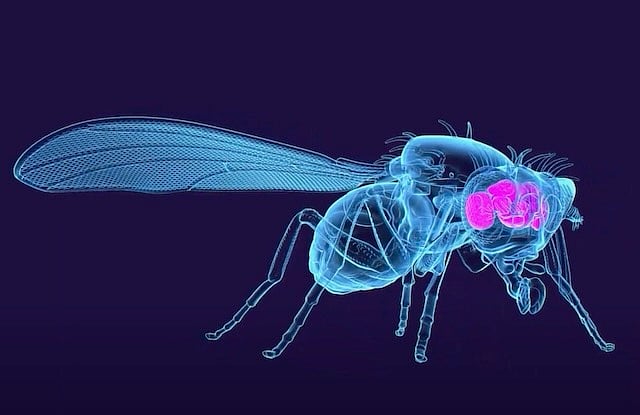Get Healthy!

- Posted October 2, 2024
So Fly: Scientists Complete Map of Adult Fruit Fly Brain
The head of a Princeton team that mapped the brain of an adult fruit fly -- a watershed step in understanding the human brain -- explains the feat in a way that belies its complexity.
"Just like you wouldn't want to drive to a new place without Google Maps, you don't want to explore the brain without a map," explained lead author Sven Dorkenwald, who received his Ph.D. last year from Princeton and is now at the Allen Institute for Brain Science in Seattle. "What we have done is build an atlas of the brain, and added annotations for all the businesses, the buildings, the street names."
With this, he added in a Princeton news release, "researchers are now equipped to thoughtfully navigate the brain as we try to understand it."
Likening it to a roadmap that traces every tiny alley as well as every superhighway, he said the new map -- called a "connectome" -- shows connections in the fruit fly brain at every scale. It could one day lead to tailored treatments for brain diseases.
Researchers described their work Oct. 2 in a special issue of the journal Nature.
They created a neuron-by-neuron and synapse-by-synapse map of the brain of an adult fruit fly (Drosophila melanogaster). It identifies different types of neurons and chemical links -- or synapses -- between them and offers information about the type of chemicals secreted by each neuron.
Fruit flies share 60% of human DNA, and have a parallel to 3 in 4 human genetic diseases. Understanding their brains is a step toward understanding those of more complex species, including people, the researchers said.
The fruit fly is also deep thinker, able to form long-term memories, engage in social interactions and navigate over large distances. Now that its connectome has been established, researchers hope to use the same methods to map larger-brained animals.
"This is a major achievement," said study co-leader Mala Murthy, director of the Princeton Neuroscience Institute. "There is no other full brain connectome for an adult animal of this complexity."
Other researchers had already mapped the brains of a C. elegans worm and a larval fruit fly, which had 302 and 3,000 neurons, respectively.
The brain of an adult fruit fly is far more complex, boasting nearly 140,000 neurons linked by an estimated 50 million synapses.
John Ngai, director of the National Institute of Health's Brain Research Through Advancing Innovative Neurotechnologies Initiative (BRAIN), hailed the achievement.
"The diminutive fruit fly is surprisingly sophisticated and has long served as a powerful model for understanding the biological underpinnings of behavior," he said in an NIH news release. "This milestone not only provides researchers a new set of tools for understanding how the circuits in the brain drive behavior, but importantly serves as a forerunner to ongoing BRAIN-funded efforts to map the connections of larger mammalian and human brains."
In a companion paper also published in Nature, researchers reported on creating a separate map, known as a projectome, of projections between brain regions.
The projectome allows for detailed mapping of specific brain circuits that control behavior, such as the ocellar brain circuit, they said. It takes in visual stimuli and orients the fly during flight.
To create the maps, researchers from the Princeton-based FlyWire Consortium, which includes 287 researchers in more than 76 labs worldwide, used an AI model and 21 million brain images.
The AI model turned "lumps and blobs" in those images into a labeled three-dimensional map. Researchers shared their work with the broader scientific community as they worked.
"It would not have been possible to reconstruct the entire wiring diagram manually," noted project co-leader Sebastian Seung, a professor of neuroscience and computer science at Princeton. "This is a display of how AI can move neuroscience forward."
The NIH's BRAIN Initiative provided partial funding for the project.
"In many respects, [the brain] is more powerful than any human-made computer, yet for the most part we do not understand its underlying logic," Ngai said. "Without a detailed understanding of how neurons connect with one another, we won't have a basic understanding of what goes right in a healthy brain or what goes wrong in a disease."
More information
The Society for Brain Mapping & Therapeutics explains how brain mapping help researchers understand the brain and its applications for human health.
SOURCE: Princeton University, news release, Oct. 2, 2024
